If you love being outside like gardening, hiking, or simply soaking up a warm evening, chances are you’ve had a few unwanted run-ins with nature’s smaller residents.
Bites and stings are almost unavoidable once you spend enough time outdoors. Sometimes they’re harmless annoyances. Other times, they bring swelling, itching, or worse—an allergic reaction or a disease-carrying infection.
Knowing exactly what bit you can make all the difference. The faster you can identify the culprit, the quicker you can treat it, relieve symptoms, and prevent bigger problems.
In this guide, you’ll learn how to recognize the 9 most common insect bites and stings, what they look like, where they tend to appear on your body, how serious they really are and most importantly, what to do next.
What Happens When an Insect Bites or Stings
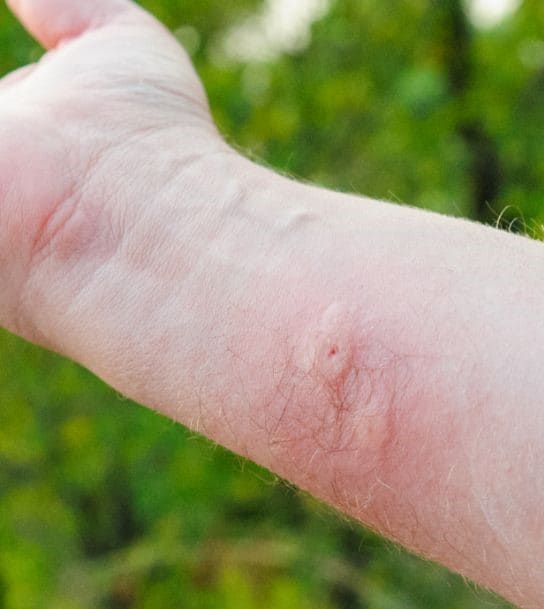
When something bites you, it’s usually trying to feed. Mosquitoes, ticks, fleas, and bedbugs pierce the skin and inject saliva to help them draw blood. That saliva triggers your immune system, which releases histamines, causing redness, swelling, and itching.
On the other hand, when a wasp, bee, or ant stings you, they’re defending themselves or their territory. Their sting injects venom instead of saliva, which can lead to a much more painful and sometimes dangerous reaction.
Each person’s response to a bite or sting is different. Some people swell more than others, and a few can develop allergic reactions. Even the same insect can affect you differently depending on where it bites, how many times, and how sensitive your skin is that day.
9 Popular Insect Bites and How to Recognize Them
1. Mosquitoes

Mosquitoes are probably the most familiar of all. Their bites show up quickly, often within minutes. You’ll notice small, raised pink welts with a tiny red dot in the center, usually where the proboscis pierced the skin.
These bites tend to itch like mad, especially in the first 12 hours. You’ll often find them on arms, ankles, or neck, places where clothing didn’t quite cover you.
If you’re outside at dusk or after rain, that’s prime mosquito time.
2. Flea Bites

Flea bites are sharp and stubborn. They usually show up in clusters or rows and are almost always on your legs or around tight clothing, like sock lines or waistbands.
The bites are small, red, and surrounded by a pale halo. The itch is intense and can last longer than a mosquito bite.
Fleas don’t fly, but they jump and if you’ve been working in mulch or grassy areas where wildlife passes through, it’s easy to pick up a few.
3. Bedbug Bites
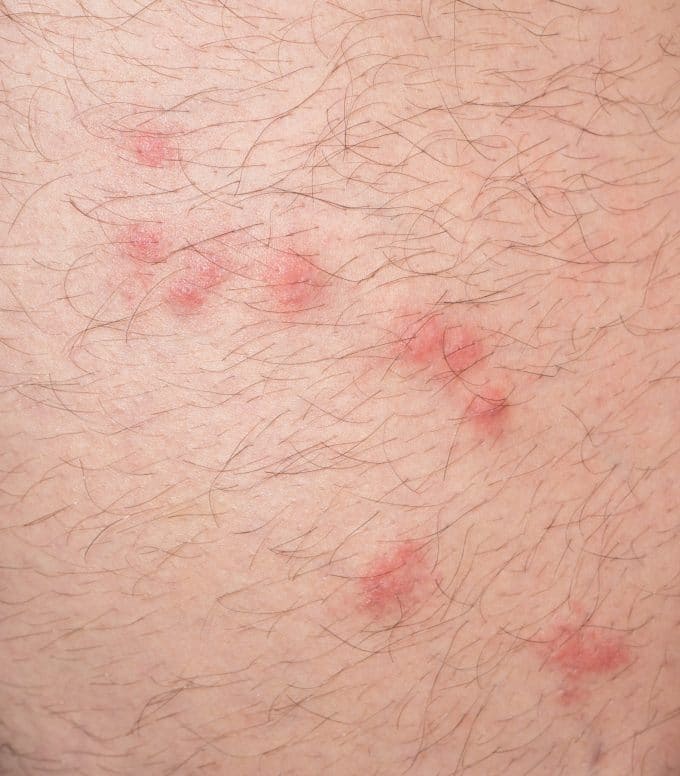
Bedbug bites can be confusing because they often show up the next day. Unlike fleas, bedbugs bite in straight lines or zigzag patterns, usually on the arms, shoulders, or back.
The bites are flat or slightly raised, red, and itchy. They don’t hurt right away but become more irritating with time.
If you’ve been moving outdoor furniture, traveling, or cleaning garden cushions, it’s worth considering.
4. Fire Ant Bites

Fire ant bites or more accurately stings, are instantly noticeable. First comes a burning sting, followed by swelling and a small raised welt.
Within hours, a white pustule forms in the center, that’s the venom at work. It’s tempting to pop it, but don’t. That’s how infections start.
These stings tend to happen on feet or legs, often when you’ve disturbed a hidden mound while watering, digging, or weeding.
5. Tick Bites

Tick bites are sneaky. You won’t feel a thing when they attach, and sometimes the bite looks like nothing more than a red dot.
In some cases, you’ll see a spreading rash, especially the telltale bull’s-eye pattern that signals possible Lyme disease.
Ticks love to hide behind knees, near waistbands, or along the hairline. After working in tall grass or wooded areas, always check carefully and remove any you find with slow, steady pressure using a tick tool or tweezers.
6. Bee Stings
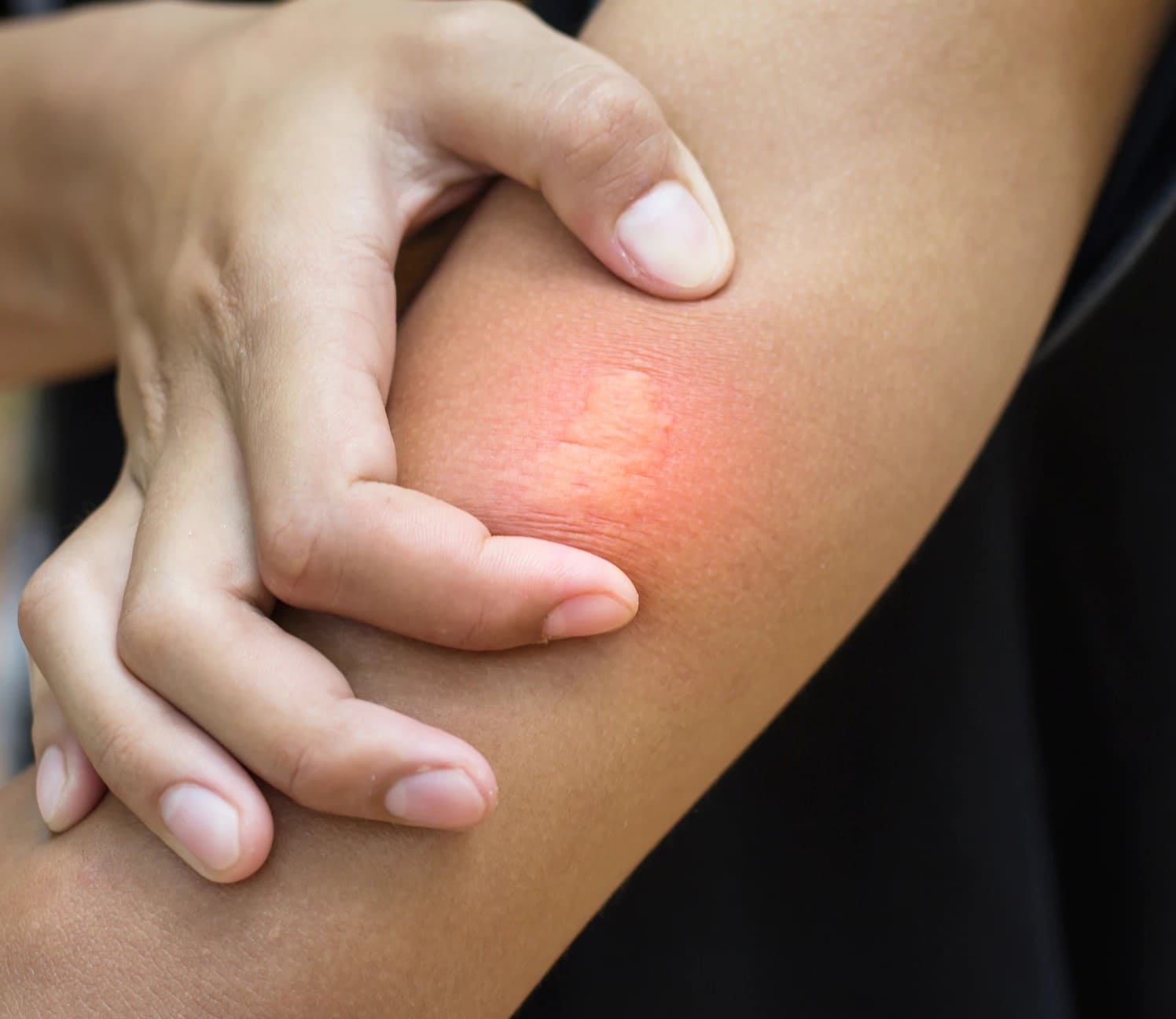
Bee stings are immediate and unmistakable. You’ll feel a sharp stab of pain, followed by a red, swollen area.
If the bee left its stinger behind, you’ll want to scrape it off gently, don’t use tweezers to pinch it out, or you might squeeze more venom into your skin. The pain may ease within a few hours, but the swelling often lingers a day or two.
7. Wasp Stings
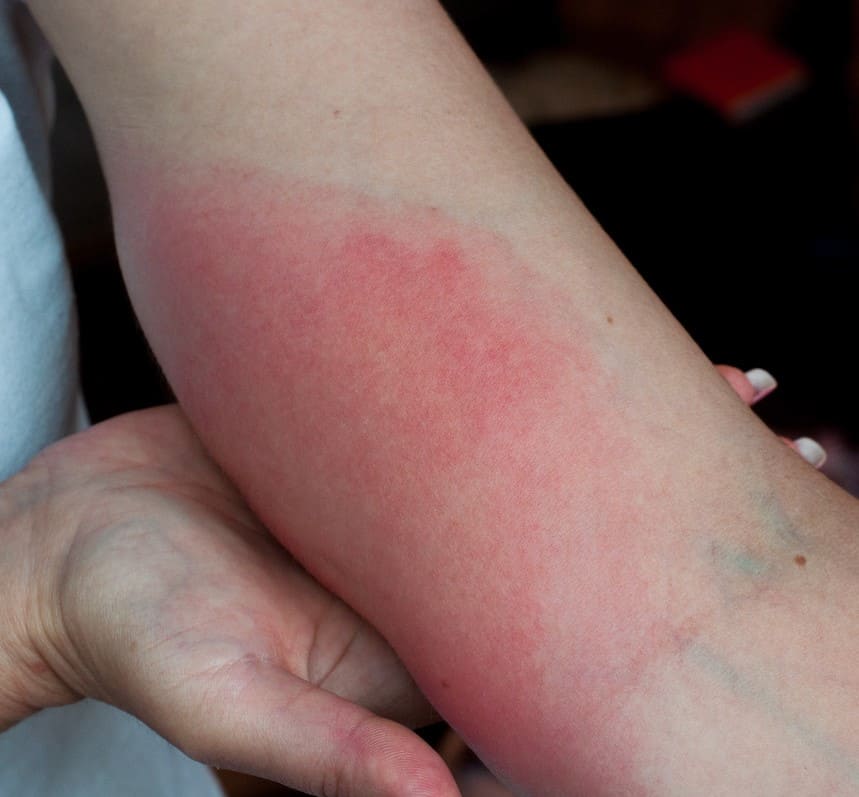
Wasp stings are fiercer. They deliver more venom and don’t lose their stinger, so they can sting again and again. The area becomes hot, red, and swollen, often with a deep burning sensation. If you’re trimming shrubs, cleaning gutters, or disturbing hidden spaces, you may accidentally come across a wasp nest—and they don’t take kindly to that.
8. Scorpion Stings

Scorpion stings are rare in some areas but not to be underestimated. The sting feels like a sharp pinprick or burn and is often followed by numbness, tingling, or muscle twitching.
You may also feel nauseous or develop a headache. Scorpions love to hide under rocks, firewood piles, or stored garden tools, so be cautious when reaching into dark corners.
9. Spider Bites
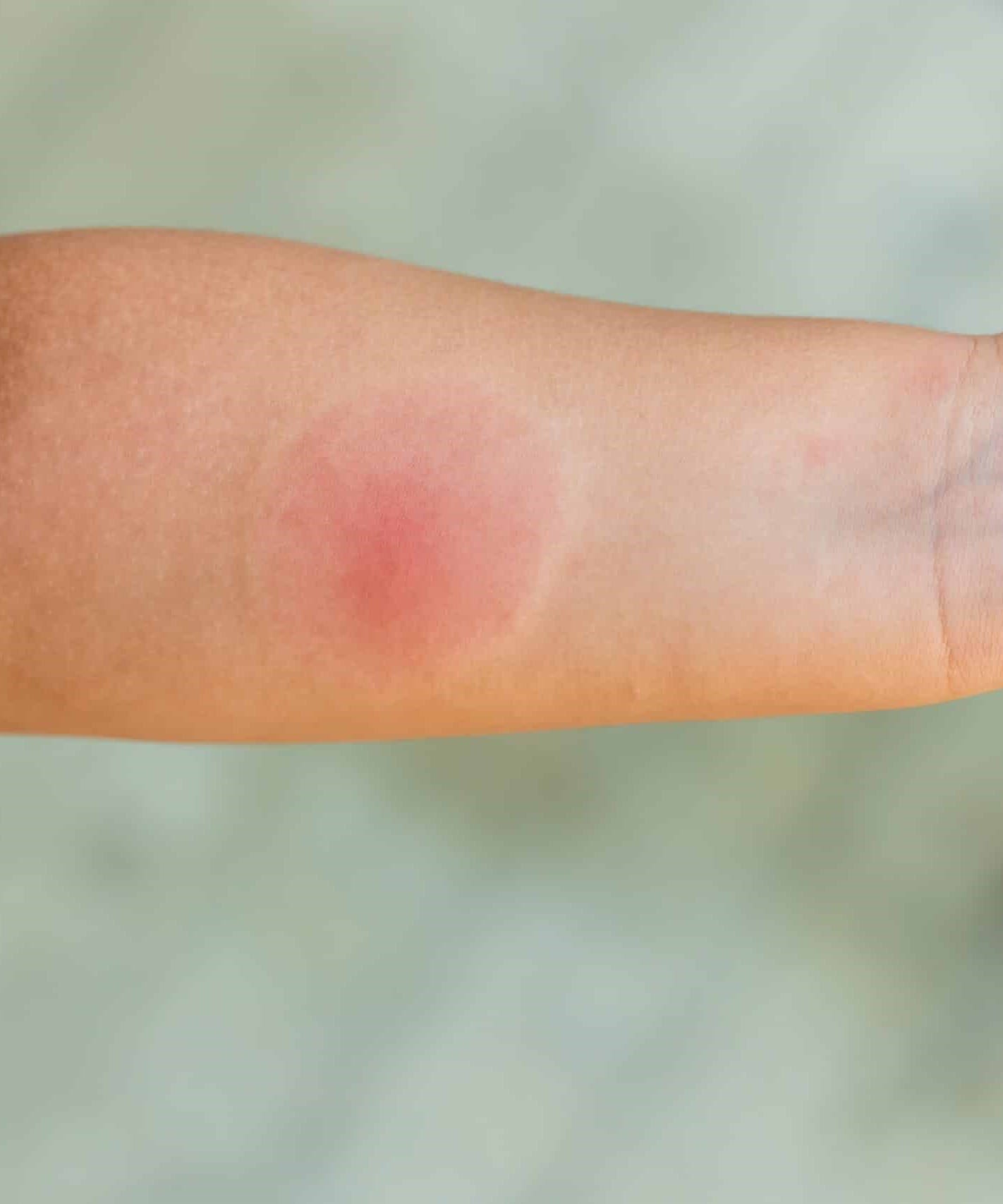
Spider bites unless from a dangerous species, are usually mild and heal on their own. But bites from brown recluse or black widow spiders are different.
A recluse bite may start out small, then blister, and eventually turn into a deep, ulcerated wound. A widow bite can cause severe cramping, sweating, and nausea, even if the bite itself looks minor.
Either way, if symptoms get worse after the first few hours, medical care is a must.
First Aid and At-Home Treatments
For most bites and stings, the best first step is to wash the area with soap and cool water. This removes dirt, saliva, or venom and helps prevent infection.
A cold compress or ice pack wrapped in cloth helps reduce swelling and numbs the sting. Over-the-counter remedies like hydrocortisone cream, calamine lotion, or antihistamines can calm itching and redness.
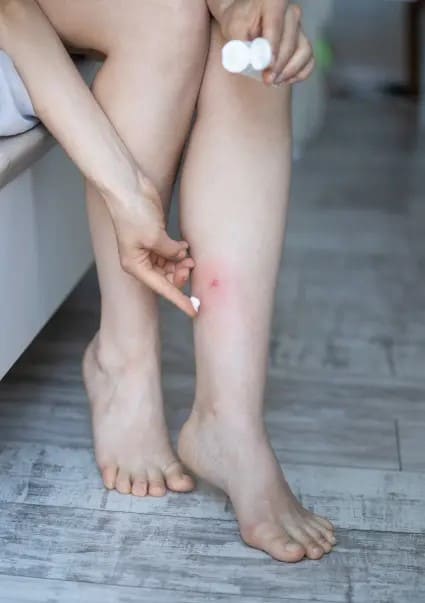
Try not to scratch. It’s hard, especially with flea or mosquito bites, but scratching breaks the skin and invites bacteria in. If you’ve been stung by a bee and the stinger is still in place, use the edge of a credit card to gently flick it off and never squeeze it.
Natural remedies can help too. Aloe vera gel cools irritated skin. Witch hazel acts as a gentle astringent. A paste made of baking soda and water takes down inflammation, especially for ant or bee stings.
You just don’t apply essential oils or vinegar to broken skin.
When to Seek Medical Help
Most bites and stings go away on their own, but some need quick attention. If you start to experience facial swelling, tightness in your chest or throat, trouble breathing, or lightheadedness, those are signs of a severe allergic reaction. Seek emergency care right away.
Watch the area over the next day or two. If the skin becomes increasingly red, hot, swollen, or starts oozing, that could signal infection.
Tick bites that lead to fever, rash, or joint pain also deserve a doctor’s visit. And if a spider bite starts to blister, darken, or spread, it’s time to have it checked.
Long-Term Risks and Complications
While most bug bites are short-lived, a few carry long-term consequences. Tick bites can lead to Lyme disease or other illnesses that cause fatigue, nerve pain, and memory issues.
Mosquitoes in certain areas may transmit viruses like dengue or West Nile. And repeated bee or wasp stings can increase your sensitivity to venom, making future stings more dangerous.
Even without disease, the habit of scratching can leave scars, especially from fire ant pustules or flea bites. That’s why treating the itch and keeping the skin clean is so important.
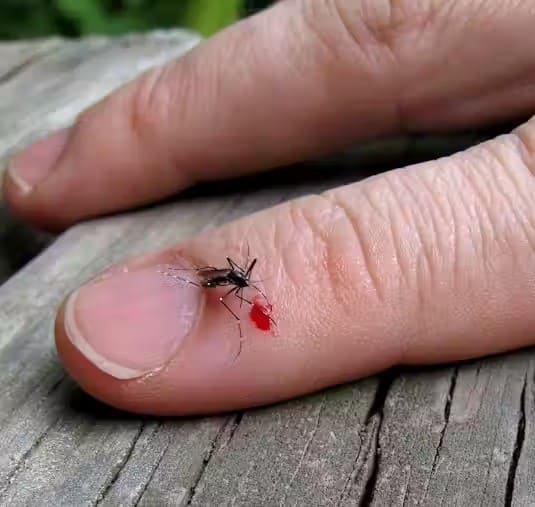
Prevention Tips
The best way to avoid dealing with insect bites is to stop them before they start. Use a proven insect repellent like DEET, picaridin, or lemon eucalyptus oil are all solid choices. Wear light-colored clothing and cover your arms and legs if you’re working in tall grass or dense shrubs.

Avoid floral-scented soaps or lotions when you’re gardening or hiking as they attract stinging insects. Keep your yard trimmed and remove standing water where mosquitoes breed. Also, sake out shoes, gloves, and outdoor gear before putting them on, especially if they’ve been left outside overnight.
After spending time outdoors, especially in wooded or grassy areas, do a full tick check and shower soon afterward. That simple step can prevent a host of complications.
Natural Remedies and Holistic Approaches
If you prefer gentler solutions for mild bites, you’re not alone. Lavender and tea tree oil, when diluted properly, can reduce itch and prevent bacterial growth.
Besides, oatmeal paste is a tried-and-true remedy for full-body irritation, great after a chigger attack. Plantain leaf poultices, calendula salves, or chamomile compresses all have soothing effects.
These natural options work best on mild bites without broken skin. If symptoms worsen or show signs of infection, it’s always better to switch to medical care.

